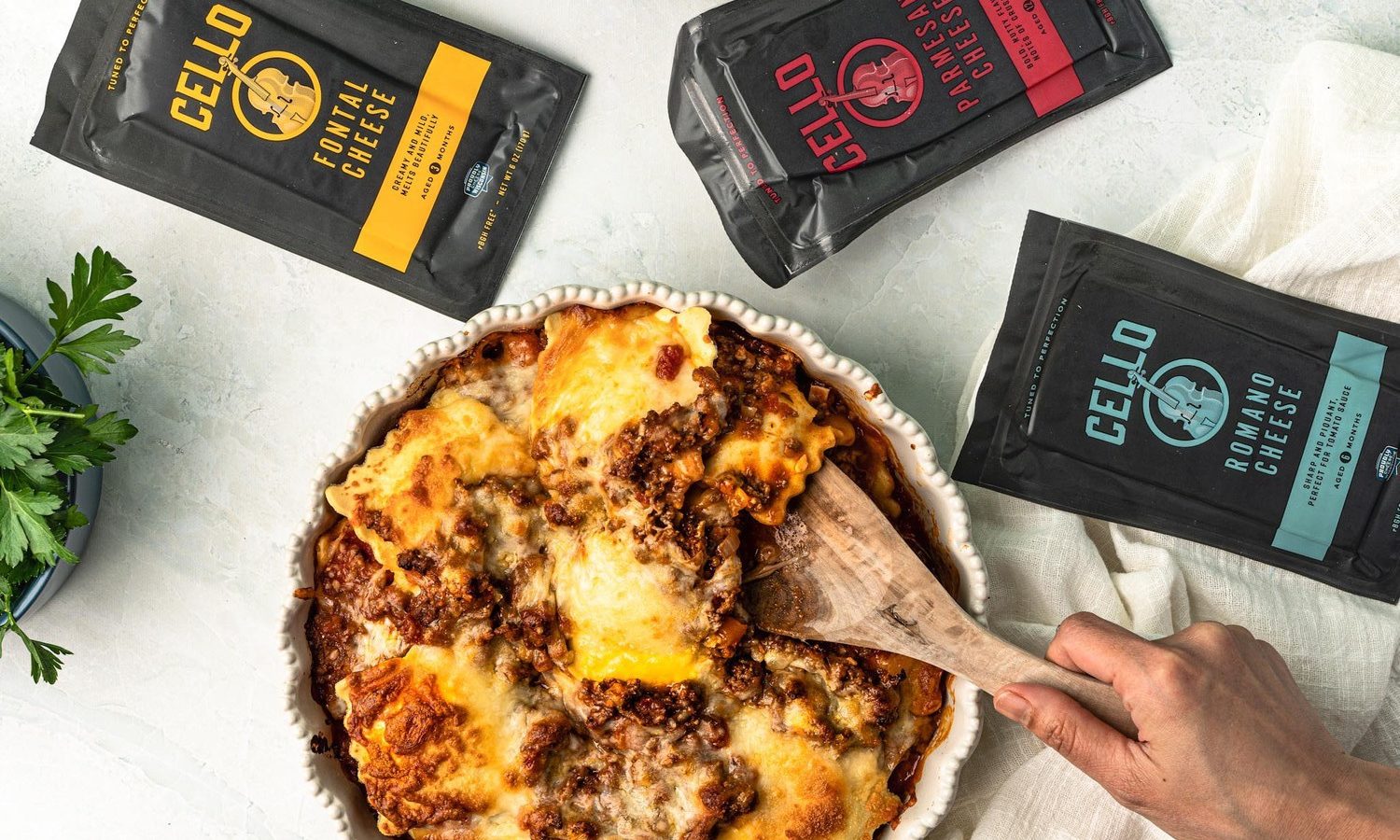If you have enjoyed that unique, rustic Romano cheese taste grated on top of some of your favorite Italian dishes, you’re not alone. Grating is the most common use of this hard texture cheese. But if that’s all you’re doing with this well-known Italian specialty cheese, we’ll be the first to say you’re missing out. Allow us to help you discover the depth behind this ancient, traditional cheese so you can enjoy it as more than just a topping for some of your favorite foods and become a wealth of Romano knowledge at your next party..
What is Romano cheese?
You may think you already know everything you need to know about Romano cheese, or maybe you just think of it as a bit saltier or sharper alternative to Parmesan. The two are often confused, but these signature Italian cheeses do have some main differences. Romano is the bolder and drier cheese, and Parmesan is the slightly sweeter and more mild of the two. But, there’s much more to know about Romano and to appreciate about one of the world’s oldest cheeses.
The Romano cheese taste and tradition
Romano cheese was created in the first century B.C. in the Roman countryside, hence the name. The Romans created this cheese to have a long storage life so it could feed the vast Roman troops, who relied on the Romano cheese to provide hearty sustenance while training and in battle. Soldiers ate a regular diet of Romano cheese and fava beans, a dish that many Roman families still eat today.
Pecorino Romano cheese did not change over time and continued to be produced only in this region of Italy for nearly 20 centuries. Today, it’s produced in Sardinia using the same recipe and is a DOP (Denominazione di Origine Protetta) cheese, a certification that provides assurance the cheese is produced in a specific region using traditional ingredients and processing methods.
After 2,000 years, Romano cheese remains popular in Italy and around the world. Pecorino Romano is the cheese commonly packed by Italians in their annual May Day holiday picnic baskets and is also a special ingredient in a number of traditional dishes Italians serve at important holidays like Christmas and Easter.
Romano cheese can be made from the milk of cows, sheep, or goats. The traditional Italian version of Romano is made with sheep’s milk and is called Pecorino Romano (translating to Roman cheese of the sheep), but in the U.S. it is most frequently made with cow’s milk and is also referred to simply as Romano cheese.
Cow’s milk and sheep’s milk produce different cheese tastes due to the fatty acids in these different types of milk (Cello’s Romano hails from the cow). Cow milk fatty acids are structured differently than other milks, thus delivering a smoother, milder, and more subtle taste. While it is aged a minimum of 6 months, Romano cheese is also aged less than some of its hard texture counterparts, like Parmesan.
Why choose Romano cheese?
Aside from its delicious, piquant taste, a great reason to incorporate Romano into your cheese rotation is its long shelf life. When stored properly, Romano can last up to six weeks in your refrigerator. This means you are always prepared to whip up a cheeseboard, top a favorite dish, or explore a new recipe using Romano.
Romano is a hard texture cheese, which means it has a lower moisture content than other cheeses. This lower moisture level means it will freeze and essentially thaw with little impact to the cheese’s texture or taste. If you choose to freeze Romano, it can last up to 6 months.
Another reason to stock up on Romano cheese is its ability to substitute for other cheeses in the hard texture category. If you have a recipe that calls for Parmesan, Asiago or Grana Padano, you can use Romano in its place. Expect a slightly different taste, but the end result is just as tasty.
What are the best uses for Romano cheese?
Romano has a hard and brittle texture that makes it excellent for grating, which is why this cheese is most frequently used as a topping over pasta, soups, and salads. But Romano cheese also crumbles well and has a slightly glossy appearance, making it the star of any cheeseboard. When paired with a dried fruit, sweet berry jam, or honey, the saltiness of the cheese is nicely balanced.
If you want to explore more ways to use Romano, consider incorporating it into a side dish, like in this roasted broccoli recipe. Or if you want to create something for a special occasion or holiday, try your hand at making the traditional Easter Bread – a savory bread that makes a delightful appetizer anytime.
If you are a cheese purist, you may want to try a common Roman dish, like the simple Cacio e Pepe. This traditional Roman pasta dish is as delicious as it is quick to prepare and consists of just four ingredients. This pasta recipe can be modified by adding summer ripe roasted tomatoes, crumbled pancetta, or fried capers for a delightful twist. Romano cheese is also the key ingredient in the always popular Fettucine Alfredo, which also can be modified to include chicken, shellfish, or mushrooms.
Another option to explore is using Romano as an ingredient, like in meatballs. That signature Romano taste gives it a ‘secret ingredient’ element unlike any other. Romano cheese melts nicely, which also makes it a great ingredient in any creamy sauce and tomato-based rosa sauces.
Romano cheese pairings
Because of its nutty tanginess, Romano cheese pairs best with fruity wines like Riesling and Prosecco. And if you love red wine, it can also be a nice match to fruity, softer red wines like Chianti and Red Zinfandel. Romano cheese also pairs well with beer. You’ll be pleased when you pair the cheese’s bold taste with a cider, beer infused with fruit, or a pale ale.
No matter how you choose to pair and enjoy Romano cheese, you’re sure to discover a cheese that is versatile, bold, hearty, and will have you cheesing confidently. Afterall, a cheese that Italians have revered for centuries deserves a chance to become one of your favorites, too.





